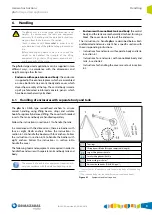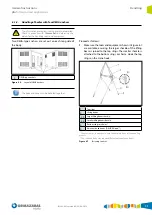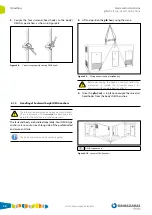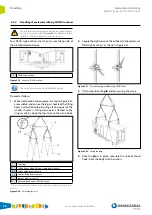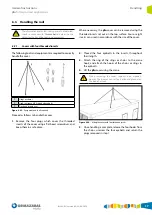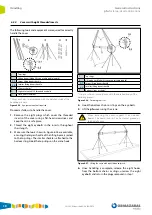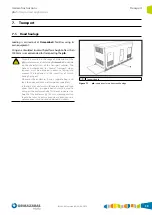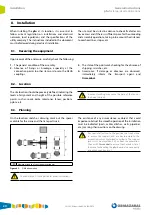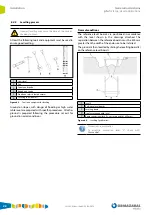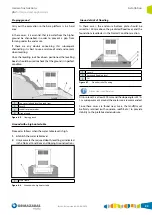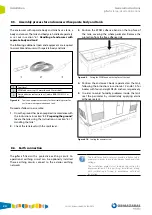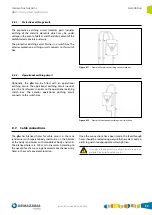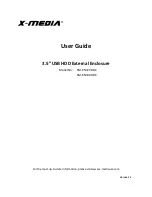
IG-262-EN versión 02; 26/04/2018
23
General instructions
pfu
for large-sized applications
Installation
Sloping ground
Carry out the excavation so the base platform is in a hard
area.
In these cases, it is essential that rainwater from the higher
ground be channelled, in order to prevent a gap from
forming under the enclosure.
If there are any doubts concerning this subsequent
channelling, it is best to use a mixture of sand and cement
when levelling.
Once the levelling rods have been positioned, the levelling
boards should be used to check that the ground is in perfect
condition.
1
Concrete slab and levelling sand layer
2
Level 0
3
Landfill or plant matter
4
Hard ground
Figure 8.5.
Sloping ground
Ground with a high water table
Proceed as follows when the water table level is high:
1.
Establish the water table level
2.
Only excavate the required depth, levelling as indicated
in the Normal Conditions and Sloping Ground sections.
1
Water table
Figure 8.6.
Ground with a high water table
Ground at risk of flooding
In these cases, the enclosure bottom plate should be
raised to 100 mm above the predicted flood level, and the
foundations levelled as in the Normal Conditions section.
1
Level 0
2
Envisaged flooding level
3
Fill
Figure 8.7.
Ground at risk of flooding
Dimensions in millimetres.
Fill in so level X is at least 400 mm and the slope angle is 45°. A
1 m wide pavement around the enclosure is recommended.
Since these cases are found near rivers, the landfill must
be firmly retained (with concrete, rockfill, etc.) to provide
stability to the prefabricated enclosure.

